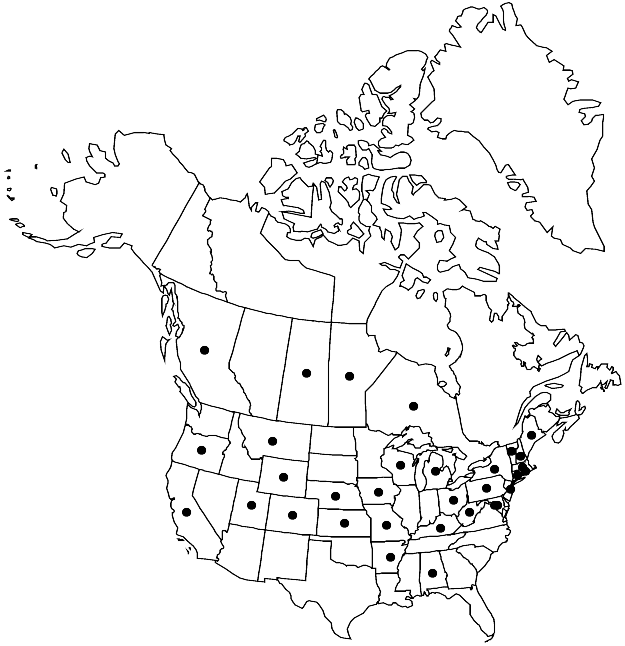Reseda lutea
Sp. Pl. 1: 449. 1753.
Plants annual or perennial, 30–80 cm, glabrous, papillose-scabrid, or hirtellous. Stems erect or ascendent, branched. Leaves: blade obovate, 4–10 × 1–2.5 cm, margins entire or ternately to biternately lobed (lobes 1–3 pairs, narrow-oblong or lanceolate-linear, margins flat or repand), surfaces scabrous or glabrous. Racemes 10–20(–50) cm; bracts caducous, oblong-linear, 2–4 mm. Pedicels 3–7 mm. Flowers (rarely polygamous); sepals persistent or tardily deciduous, (5–)6, not reflexed in fruit, linear-oblong, 3–4 mm; petals (5–)6, yellow, 2–5 mm, rounded-clawed, adaxial ones trisect, lateral lobes semilunate or falcate, margins entire or incised; stamens (12–)14–18; filaments deciduous, 1.5–3 mm, scabrid-papillose; intrastaminal nectary-discs pilose; anthers 0.9–1.5 mm; placenta entire. Capsules usually erect, 3-carpelled, cylindric or ovoid to subglobose, 7–15 × 4–6 mm, apically 3-toothed, glabrous or papillose, ribs scabrid. Seeds 1.4–2 mm, glossy, smooth (carunculate). 2n = 48.
Phenology: Flowering (Apr-)May–Sep.
Habitat: Grasslands, pastures, gravelly or shaley slopes, railroads, roadsides, mortared crevices in stone walls, disturbed areas, ballast ground, agricultural fields, usually on basic soils
Elevation: 0-1500 (-2500) m
Distribution

Introduced; B.C., Man., Ont., Sask., Ala., Ark., Calif., Colo., Conn., D.C., Iowa, Kans., Ky., Maine, Md., Mass., Mich., Mo., Mont., Nebr., N.H., N.J., N.Y., Ohio, Oreg., Pa., R.I., Utah, Vt., W.Va., Wis., Wyo., Europe, sw Asia, n Africa, introduced also in South America, c Asia, s Africa, Australia.
Discussion
In Australia, Reseda lutea is considered an invasive introduction that causes damage to crops; research is being carried on for means to control its expansion. It has been used as a dye plant, to a lesser extent than R. luteola. It has been found to have antibacterial activity against some pathogens. There is also potential utility for phytoremediation in soils contaminated with copper.